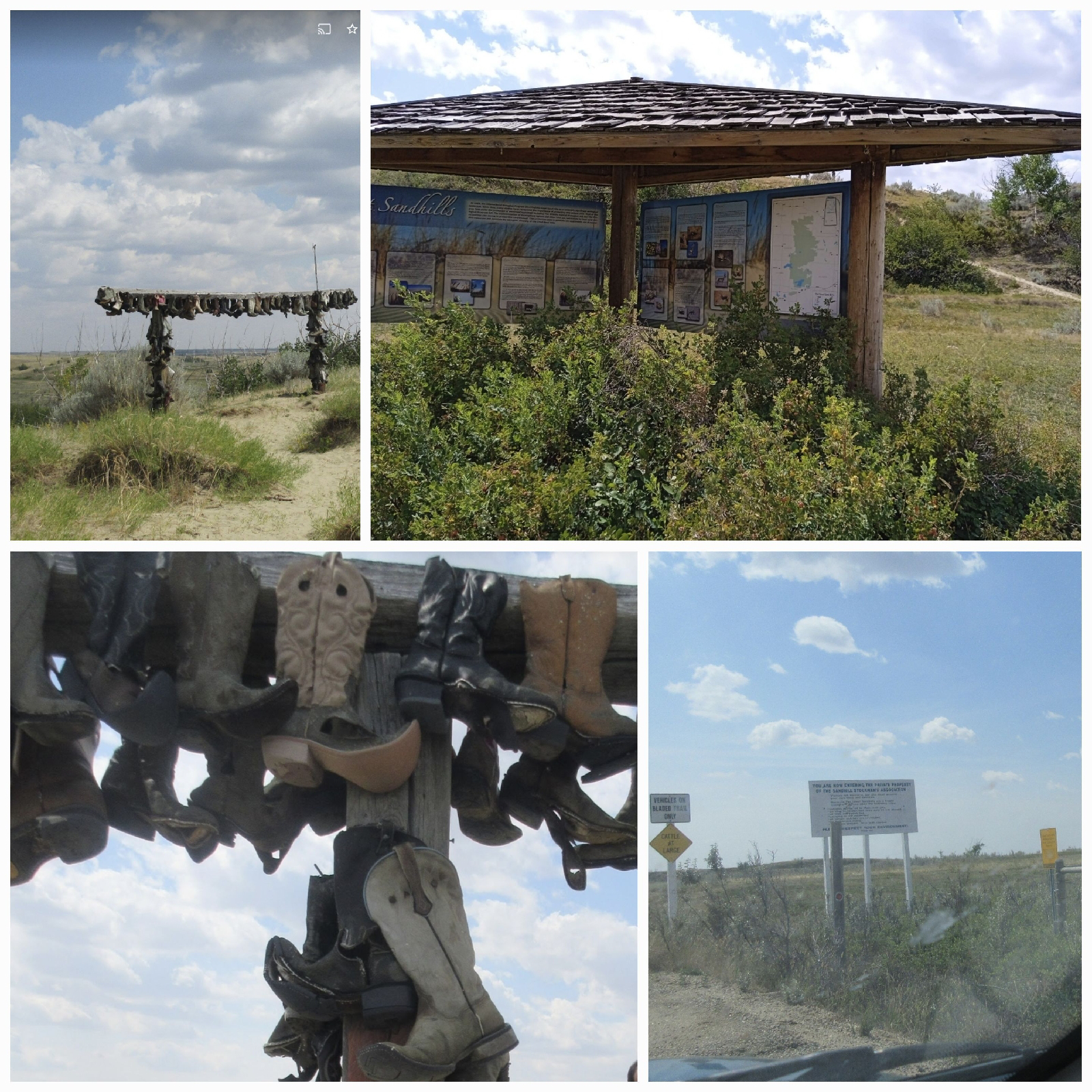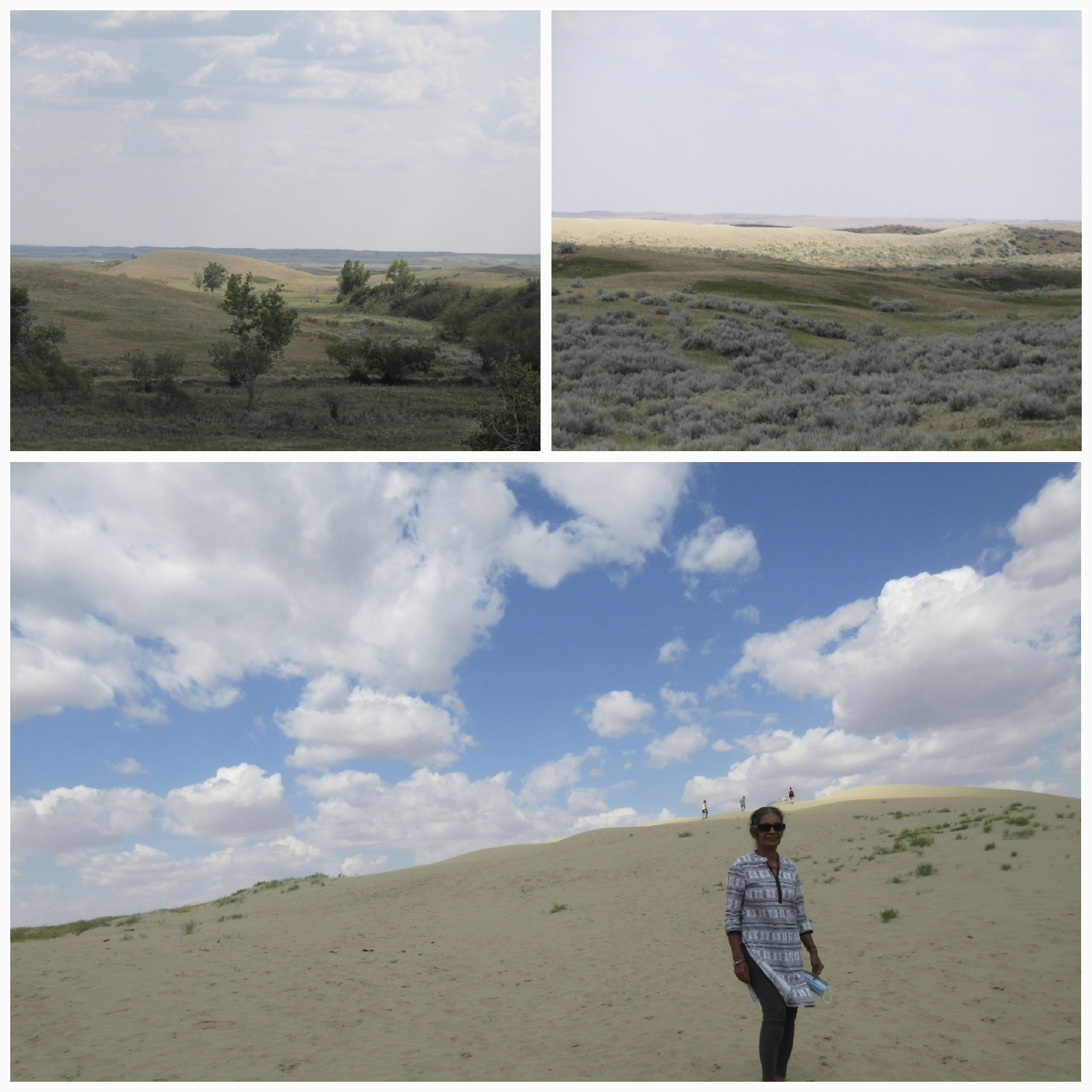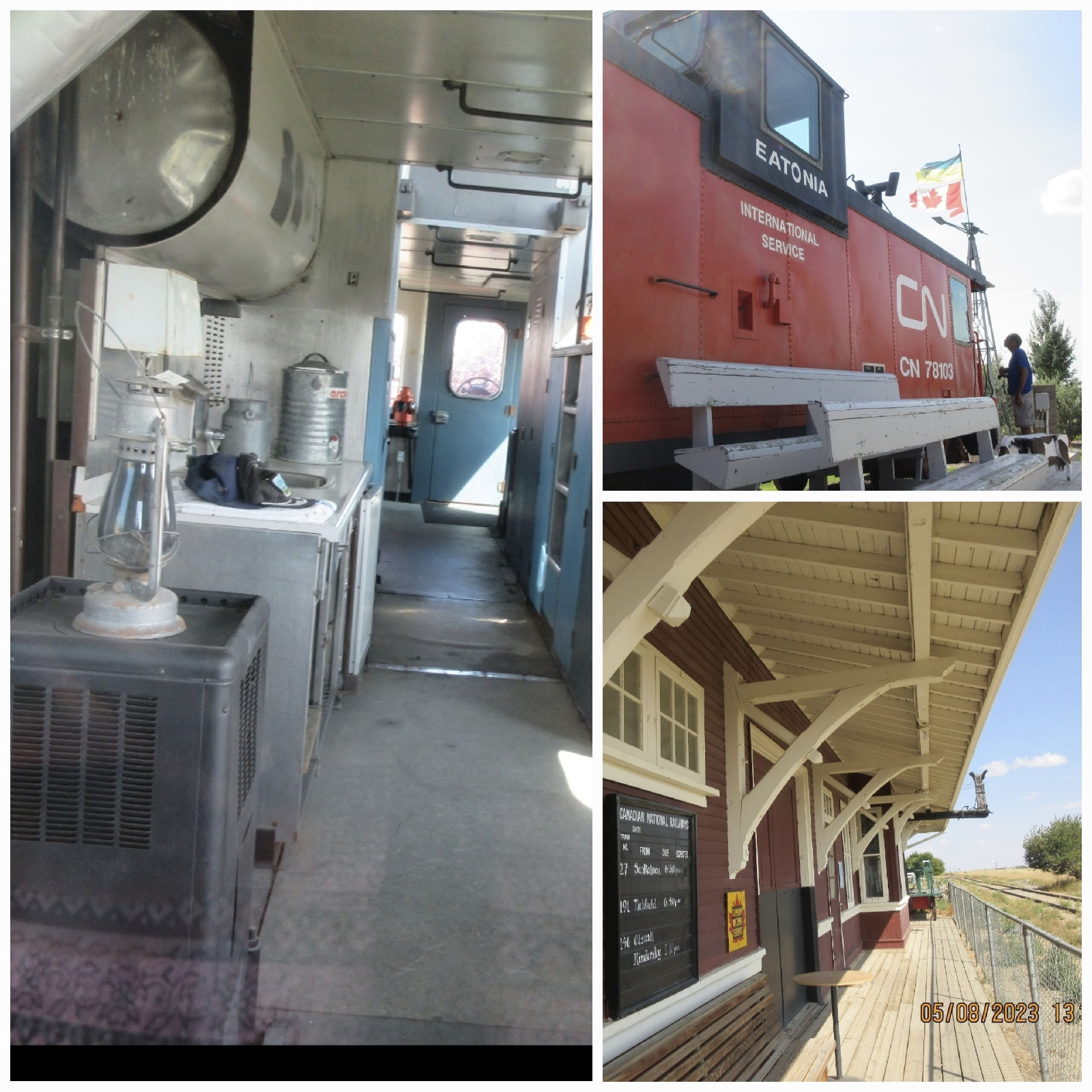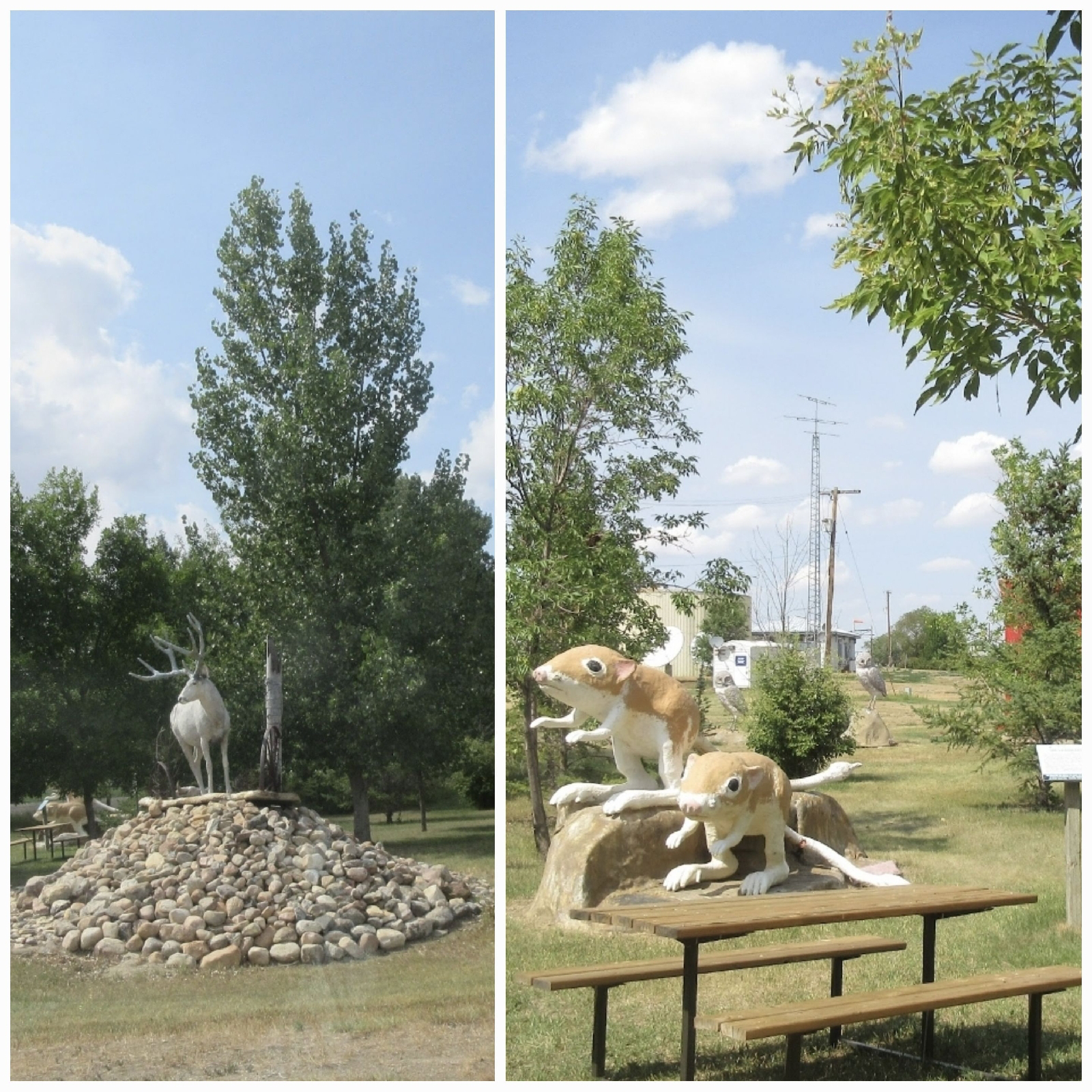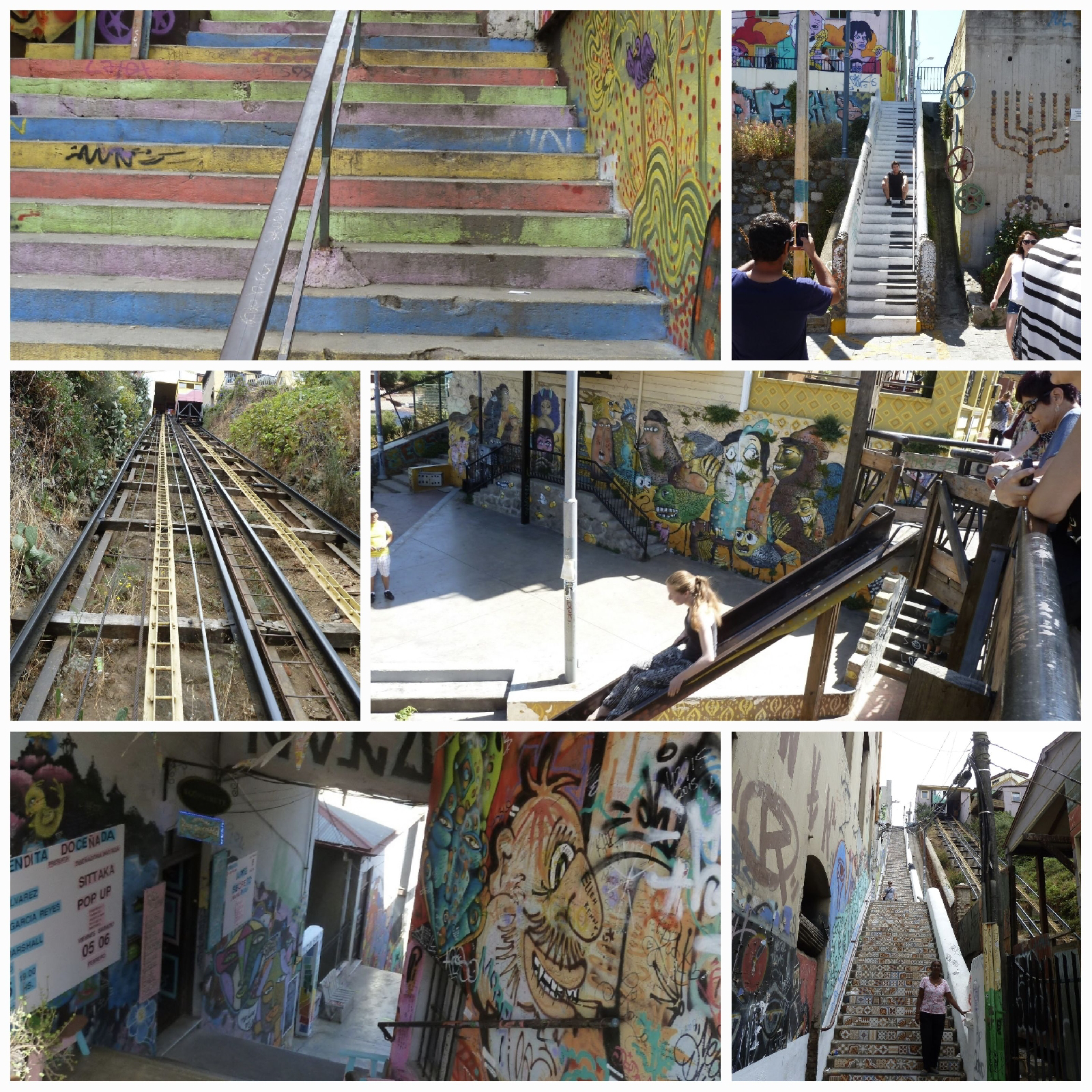A provocative suggestion: assumptions called into question
Almost out of the blue we are asked if we'd like to go see a sand dune. We are in Saskatoon and its summer.
What? A sand dune in the hot summer? In the treeless prairies of all places? Are'nt the prairies known for wheat fields? Isn't this where slo-mo mechanical donkeys extract black gold? Isn't this where cattle graze? Isn't this covered in a thick blanket of snow in winter? The head scratcher has begun to gnaw at us.
It gets more intriguing: What's in a name?
The strangeness of it all is further beefed up as we drive through small towns. We pass by Eatonia named after Timothy Eaton, the founder of the chain of high-end Eatons department stores. Prophetically the next small town we pass is called Leader! And that leads us to Sceptre! A royal entrance indeed for this is where the Interpretive centre is.
Trail trial
The road to the great sand hills starts at a turn in Sceptre. We feel and hear a grinding and the wheels trying to get traction. We find ourselves driving on loose gravel. It gets very tricky indeed. The wheels slip, throw up gravel, fling pebbles. The road has 90 degree turns either to the right or left every few minutes which seems like ages because of the assiduous driving. Some junctions have clear directional arrow sign boards. We have lucky guesses on the unmarked ones. Confounding it all we send aflutter a horde of grass hoppers and various other insects in our path. They hop, jump and fly to save themselves from being crushed only to find themselves kamikazeing at the windshield leaving large splatters of themselves limiting our visibility.
We then glide onto a well compacted dirt road. The flat fields of green and gold have now given way to gently undulating land. The road is flanked by shrubs and scrawny trees with their roots firmly holding the terrain together. Don't even think of driving there on rainy days.
What the dickens?
We have reached our destination. There's some sand in the fringes of the car park. Only two other vehicles are parked here. Young people are guzzling cool drinks and noshing. Raised hatchbacks reveal trunks packed with loaded coolers and sleds. We are definitely in the on-site parking lot but there are no amenities and no washrooms.
As we get out and stretch our legs our daze clears. The first thing that catches our eye is the wooden arch bedecked with boots, high above us. A slight turn of the head is all we need to see a dune dotted with a few people sledding down the slope. There's a lot of shrub holding it together near the foot.
A little shelter has information boards. We want to explore before getting into the whys and wherefors.
Trails are in clear sight. We take the one that goes towards the dune. It is by no means straight. As we walk we unsettle the resident insects, sometimes inadvertently crushing them underfoot. More often, we brush them off. We climb on soft golden sand on the wind-sculted rippled side. Following footprints left by others is by no means the best plan as we discovered in our slithering and sliding moments as we tried to gather traction. Finally we are up there, 15 meters high. That's when it hits us. We are on the nearest dune but there are so many other in the distance. Some are heavily coverd by shrubs. The skies are a beautiful blue. Usually they are dappled with cottony clouds but today? They were merciful. The clouds were huge and therefore gave us welcome cover from the heat. The descend on the leeward side is strenuous. Sliding and slithering is the norm. A tobaggon would have helped.
Where there is a trail . . .: animal instints
We first explore the archway of old boots --wooden structure adorned worn out cowboy boots nailed onto it. It is a beautiful photo opportunity. We have a fantastic view of the nearly 2000 sq kms of active dunes in prairieland. It also reveals trails all over the huge expanse of undulating land.
Of course, trails lead to discoveries of all sorts. Trust the animals. They know the terrain better. The cattle hooves figured it all out. Man followed. Yes, this is private land that belongs to cattles ranchers. That explains the gravel and dirt roads, the lack of amenities,etc. But we are winded. No more trekking in the wilderness.
Shifting sands: ever-changing landscape
We are aware of how sand dunes are formed, how many different types there are and that they are not exclusive to arid land closer to the equator. The hills that we saw are active ones. The sand is a shape shifter depending on the power of the winds and the amount of sand lifted , flung around and deposited. Only the shrubs that clasp the grains together mark the foundations of the dome shaped dunes that are confronted by winds from all sides. So we may have been on one that's here now gone tomorrow. To boot, dome sand dunes are the rarest of them all.
In my post on Swakopmond, Namibia, I wrote about the coastal dunes The Skeleton Coast in Namibia covers a field two to five kilometers long and 20 kilometer wide.
The narrative
Now for the whys and wherefors. About 12 hundred years ago nearly all of Canada was covered in what is now known as the Laurention Ice Sheet. When it melted? You guessed it. Saskatchewan was left with massive lakes and huge amounts of sand.
The round up from cattle land
On the way back to Saskatoon we stop at Sceptre at the Great Sandhills Museum and Heritage Centre which is closed for the weekend.
At Eatonia we are drawn to the former CN train station which is now the Wheatland Regional Library (Eatonia Branch). The station, a caboose and a wood-frame house ordered from the Eaton's catalogue in 1917, are all part of the Eatonia Heritage Park.
At Leader we are enticed by the park that displays models of a prehistoric animal and the local wild life.
We arrive in Saskatoon with not a single scatch on the car or crack on the windshield, head lights and tail lights intact. The only sign of having been to the dunes is the remains of and spatters made by the frenzied insects against the windshield and the radiator grill.
Before we reach home we treat our brave vehicle to a thorough car wash, including the undercarriage. Even after the cleaning remnants stubbornly stay on for a few months.

